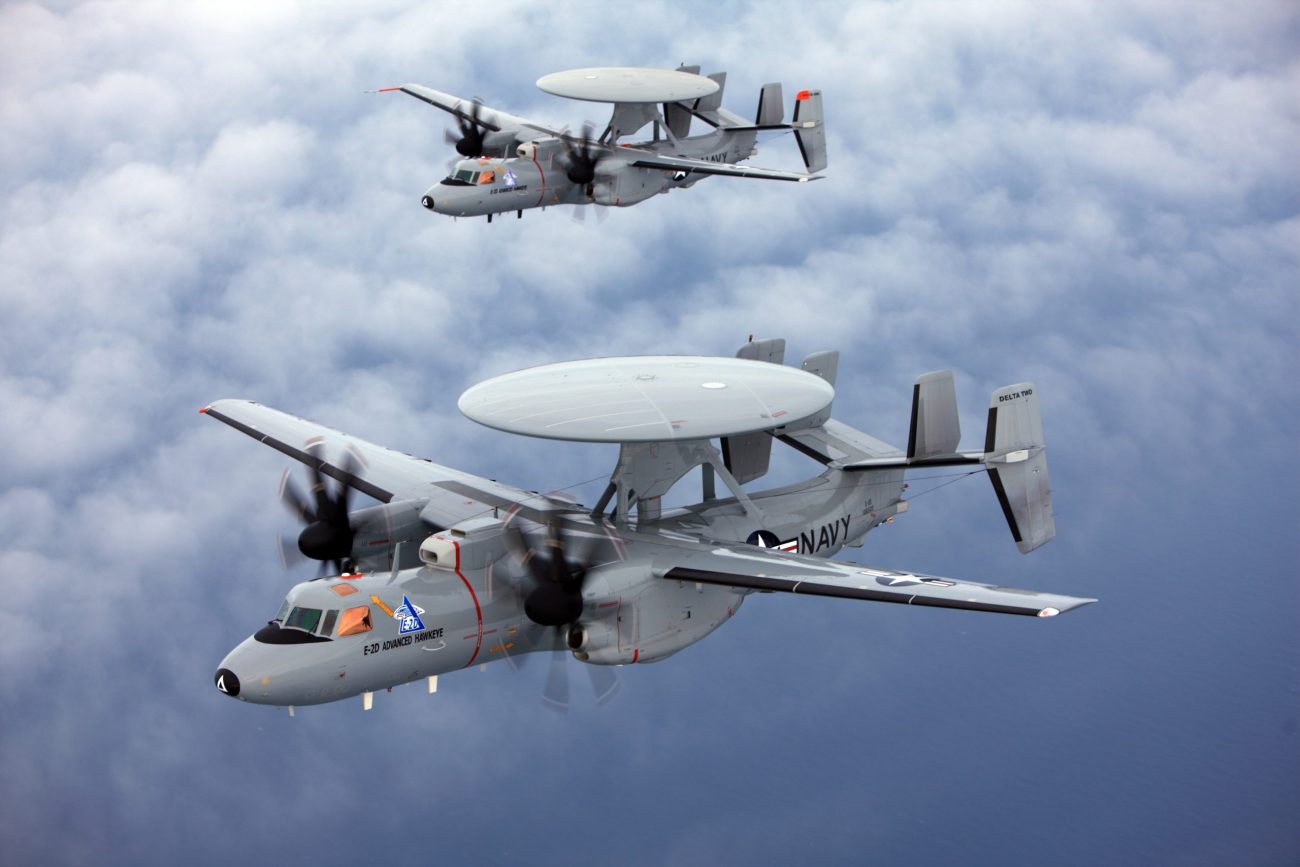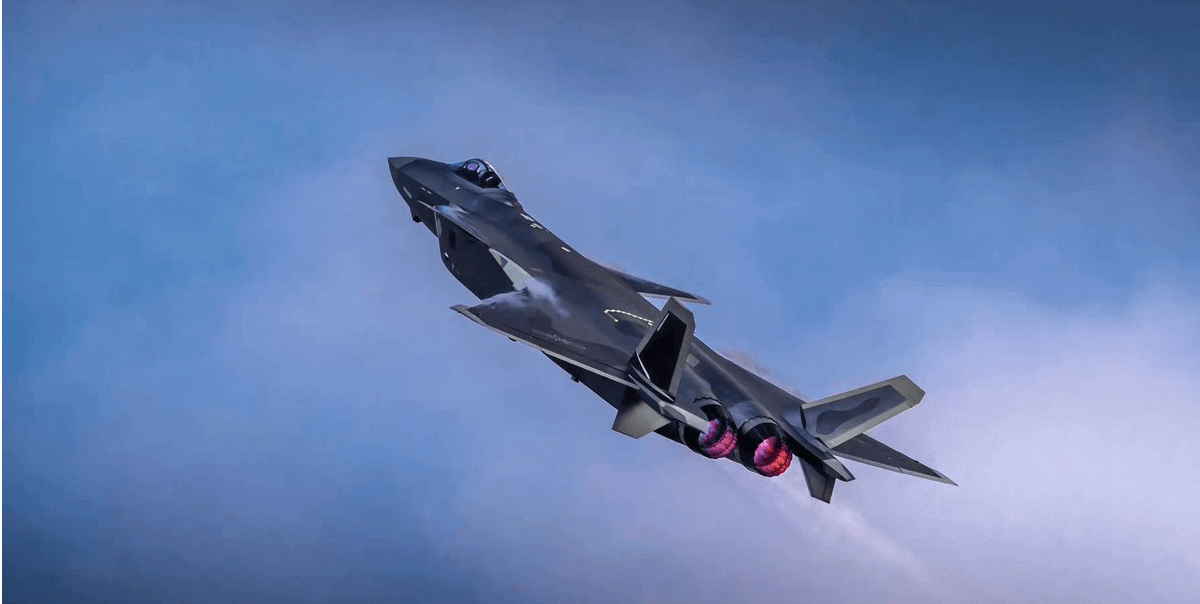The US Navy’s latest and most advanced variant of its carrier-based E-2 Hawkeye airborne warning and control system (AWACS) aircraft made a brief appearance in ‘Top Gun: Maverick’, according to a Twitter post by Lockheed Martin.
‘Record-Breaking Achievement’ – US Air Force Successfully Performed The Fastest Hypersonic Sled Recovery Test
This means a significant leap from the movie’s 1986 prequel, ‘Top Gun’, which did not feature an AWACS platform, even though E2 Hawkeyes have been in service with the US Navy since 1964, to provide early warning and command and control for its carrier battle groups.
In the very initial scenes of the Top Gun, two F-14 Tomcat fighters are seen scrambling toward an unknown threat approaching the US aircraft carrier.
As they close the distance between them and the bogey, the American pilots, callsigns Maverick (Tom Cruise) and Cougar, are not able to identify whether it is an enemy fighter jet and if there were more than one aircraft.
Finally, one of the pilots, callsign Cougar has to make a high-speed pass right on top of them to realize that there were two MiG-28s – a fictional aircraft portrayed by Northrop F-5.
Not even the command and control center on the carrier had any idea about the threat they were facing until Tomcats visually identified them.

The Power Of AWACS
In reality, the aircraft carrier would have had an E-2 Hawkeye in the air well before those F-14s were dispatched. If the E-2 had been employed in a real scenario, the MiGs would have been identified from well over 241 km (150 miles) away.
The E2 would have also directed those F-14s to intercept the two adversary jets and provide in-depth situational awareness of the entire battle space.
For example, in the early 1990s, E-2s provided airborne command and control for successful air operations, which were a part of an armed campaign waged by the US-led coalition against Iraq in response to the invasion of Kuwait.
Directing both land attack and combat air patrol missions over Iraq, the E-2 Hawkeye provided air control to shoot-down two Iraqi MIG-21 aircraft by carrier-based F/A-18s in the initial days of the war.
The sequel of Top Gun, featuring E-2D Advanced Hawkeye, even for a brief moment, makes a strong impression.
Did you see the @northropgrumman E-2D Advanced Hawkeye and the Lockheed Martin AN/APY-9 Radar make a cameo in the new @topgunmovie?
We’ll be signing autographs all week.#TopGun pic.twitter.com/N3Euh4P6vt
— Lockheed Martin (@LockheedMartin) June 2, 2022
What is even more important is that the movie depicts the newest variant of the E2, according to Lockheed Martin, whose Twitter post reads, “Did you see the @northropgrumman E-2D Advanced Hawkeye and the Lockheed Martin AN/APY-9 Radar make a cameo in the new @topgunmovie?”
Apart from E-2D, other aircraft featured in the movie include F/A-18E/F Super Hornets, the F-35C, and even the Su-57s as the adversary aircraft.

The E-2D Advanced Hawkeye
The E-2 was US Navy’s first purpose-built AWACS aircraft introduced into service in January 1964 as a replacement for the E-1 tracer.
Powered by two turboprop engines that produce 5100hp each, the E-2 has a maximum speed of 400 mph and a cruising speed of 295 mph. It has a service ceiling of 34,700 feet and can operate for eight hours without refueling.
The Hawkeye houses the powerful APS-145 radar or the APY-9 for the E-2D variants. This, coupled with its Identify Friend or Foe (IFF) and its passive detection systems, enables the E-2 to become the “eyes of the fleet” providing early warning, threat analysis, and control of counteractions against any air and/or surface targets.
The Hawkeye can operate in all weather conditions and is capable of monitoring more than 600 targets simultaneously and more than 40 airborne targets.
Over five decades of its service, the E-2 has been updated several times and the US Navy had plans to replace it with a completely different platform. Instead, the service opted for transition to the much more advanced E-2 variant, the E-2D Advanced Hawkeye.
Key E-2D objectives include improved battle space target detection and situational awareness, especially in the littorals; support of Theater Air Missile Defense (TAMD) operations; and improved operational availability.
The E-2D Advanced Hawkeye could be the US Navy’s secret weapon against the emerging threat of fifth-gen stealth fighters. As per a report in USNI citing experts, military experts have lauded UHF radars as an effective countermeasure to stealth technology.
“It is the physics of longer wavelength and resonance that enables VHF and UHF radar to detect stealth aircraft,” Arend Westra wrote in his article Radar vs. Stealth.
UHF-band radars operate at frequencies between 300MHz and 1GHz, which results in wavelengths that are between 10 centimeters and one meter long.
Typically, due to the physical characteristics of fighter-sized stealth aircraft, they must be optimized to defeat higher frequencies in the Ka, Ku, X, C and parts of the S-bands.
There is a resonance effect that happens when a feature on a fighter jet —such as a tail-fin tip— is less than eight times the size of a particular frequency wavelength. That omnidirectional resonance effect produces a “step change” in an aircraft’s radar cross-section.

This implies that small stealth warplanes that do not have the size or weight allowances for two feet or more of radar absorbent material coatings on every surface are forced to make trades as to which frequency bands they are optimized for.
That would include aircraft like the Chengdu J-20, Sukhoi PAK-FA (Su-57) and even Lockheed Martin F-22 Raptor and F-35 jets, the report mentioned.
The E-2D reached IOC in October 2014, and as of February of the current year, the US Navy was said to have 51 units of the aircraft. While the Navy’s E-2D requirement is 86 aircraft, the service is funded for a total of 78 Hawkeyes that are planned to be fielded by 2025.
With production coming to an end in 3-4 years, the Navy is working out a plan to sustain the E-2D Advanced Hawkeye for the next 30 years, through a series of ‘delta system software configurations’ (DSSC) upgrades, with each new DSSC coming every two years.
So far, a total of six DSSC upgrades are known to have been planned, which include improved cockpit avionics and enhancements to mission systems, communication capabilities, and cybersecurity to keep the “eyes of the fleet” open well into 2040 and beyond.
In addition to the US Navy, the Japanese Self Defense Force also operates 3 E-2DSs, which has signed a contract for a total of nine units and even France signed an agreement in December last year to purchase three E-2Ds that are planned to be delivered in 2027.
Meanwhile, Taiwan and Egypt are also reportedly in discussions to field the platform. All four countries already operate the legacy E-2C Hawkeyes.
- Contact the author at tanmaykadam700@gmail.com
- Follow EurAsian Times on Google News




